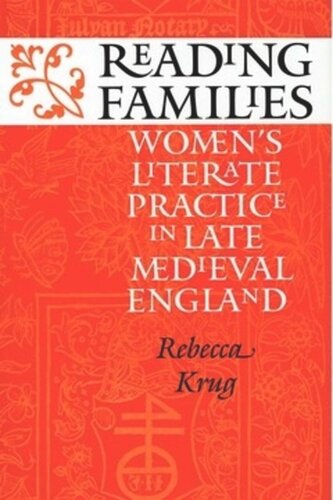

Most ebook files are in PDF format, so you can easily read them using various software such as Foxit Reader or directly on the Google Chrome browser.
Some ebook files are released by publishers in other formats such as .awz, .mobi, .epub, .fb2, etc. You may need to install specific software to read these formats on mobile/PC, such as Calibre.
Please read the tutorial at this link: https://ebookbell.com/faq
We offer FREE conversion to the popular formats you request; however, this may take some time. Therefore, right after payment, please email us, and we will try to provide the service as quickly as possible.
For some exceptional file formats or broken links (if any), please refrain from opening any disputes. Instead, email us first, and we will try to assist within a maximum of 6 hours.
EbookBell Team

5.0
20 reviewsRebecca Krug argues that in the later Middle Ages, people defined themselves in terms of family relationships but increasingly saw their social circumstances as being connected to the written word. Complex family dynamics and social configurations motivated women to engage in text-based activities. Although not all or even the majority of women could read and write, it became natural for women to think of writing as a part of everyday life.Reading Families looks at the literate practice of two individual women, Margaret Paston and Margaret Beaufort, and of two communities in which women were central, the Norwich Lollards and the Bridgettines at Syon Abbey. The book begins with Paston's letters, which were written at her husband's request, and ends with devotional texts that describe the spiritual daughterhood of the Bridgettine readers.Scholars often assume that medieval women's participation in literate culture constituted a rejection of patriarchal authority. Krug maintains, however, that for most women learning to engage with the written word served as a practical response to social changes and was not necessarily a revolutionary act.